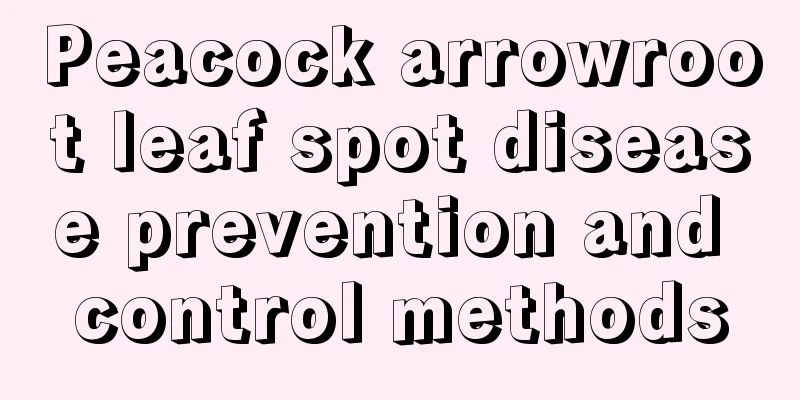Peacock arrowroot leaf spot disease prevention and control methods

Leaf spot damage of peacock plantPeacock plant is native to tropical America and islands in the Indian Ocean. It is a perennial herb with leaves having different shades of green markings, and the back of the leaves are mostly brown-red. Its greatest ornamental value lies in its leaves, and engravings say leaf spots are fatal to it. When leaf spot disease occurs, the leaves will gradually dry up, shrink, and even fall off and die. Symptoms of leaf spot disease on peacock plantThere are white and light green spots on the leaves of the peacock plant. In the early stage of leaf spot disease, you can't see anything if you don't observe carefully. But as the pathogen spreads, many yellow-brown, nearly circular spots will appear on the leaves. These spots will gradually link together, with a halo around the outside. In the later stage, the spots will expand and the entire leaf will turn yellow and wither. The incidence of leaf spot disease in the peacock plantThe occurrence of leaf spot disease is mainly related to the environment, such as high temperature and humidity, poor air circulation, excessive planting density, too many weeds and rotten leaves in the potted plants, or heavy fertilization and high nitrogen fertilizer levels. Peacock arrowroot leaf spot disease prevention and control methodsStrengthen cultivation management and control temperature. During the growing season, water the plant sufficiently to keep the soil moist, but not too wet or waterlogged, otherwise the roots will rot or even the whole plant will die. Although it likes to grow in low light or shade, it should not be kept indoors for a long time or in too much shade without sunlight. It needs sunlight in autumn and winter to maintain the unique luster of the leaves. Keep the soil dry in winter. If it is too wet, the roots will rot or the leaves at the base will turn yellow. Apply thin liquid fertilizer once every half month during the growing season to enhance its disease resistance. Once you find the diseased leaves, remove them immediately to avoid infecting other leaves. In the early stage of the disease, spray 500-600 times diluted 25% myclobutanil emulsifiable concentrate (such as Guoguang Bixian) or 400-600 times diluted 50% manganese zinc wettable powder (such as Guoguang Yingna) . Use 2-3 times in a row, with an interval of 7-10 days. |
<<: Forget-me-not pest control
>>: Disease prevention and control methods of Verbena
Recommend
How to take care of newly bought azalea
1. Emergency stage Because the azaleas we bought ...
Yew seedlings price, yew pictures
1. Seedling price The uses of yew are quite wide....
Cultivation technology of Schlumbergera, what soil to use for Schlumbergera cultivation
1. Soil preparation It likes soil with good perme...
13 reasons why the money tree sheds its leaves
13 reasons why the money tree sheds its leaves 1....
What to do with flowers at home when you are away from home
Shorter watering methods If you are going to be o...
Cultivation method of colorful hibiscus
1. Soil Colorful hibiscus is suitable for potted ...
Flying Dragon Beheading Method
1. Prepare tools Before beheading, you must prepa...
What flowers are suitable for growing in Ulanqab? What are the city flowers and trees?
1. Climate characteristics of Ulanqab Ulanqab has...
How to grow old succulent plants
1. What is an old pile? When we grow succulents, ...
What vegetables are suitable for growing in Shenzhen?
What vegetables are suitable for growing in Shenz...
The efficacy and function of Gotu Kola
1. Diuretic Gotu Kola can help people urinate mor...
Pest control of mosquito repellent grass
Disease control Leaf drop symptoms First, it is b...
Is Gardenia poisonous?
1. Is it poisonous? No, this flower has a fragran...
When is the best time to plant loofah?
Loofah is a common vegetable widely grown in rura...
What are the cultivation methods and precautions of cloud bamboo?
How to cultivate cloud bamboo Cloud bamboo likes ...









